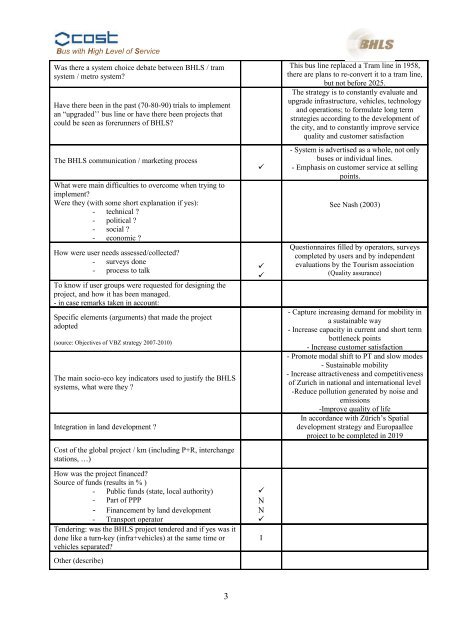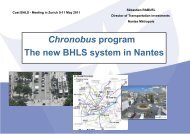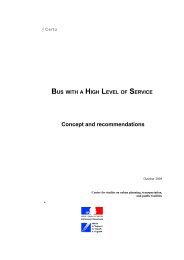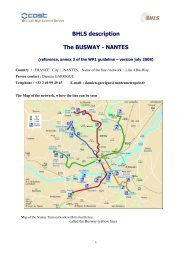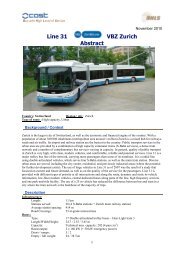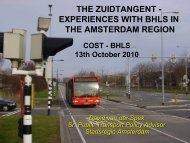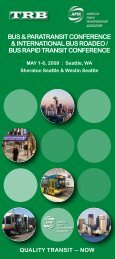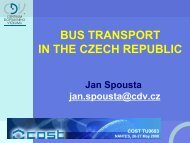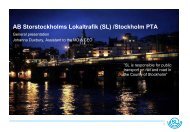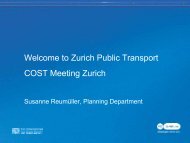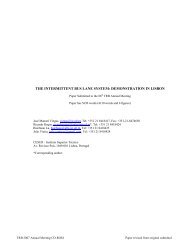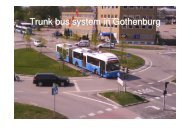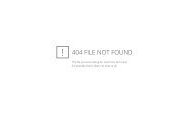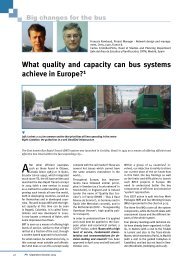Description template for a BHLS
Description template for a BHLS
Description template for a BHLS
Create successful ePaper yourself
Turn your PDF publications into a flip-book with our unique Google optimized e-Paper software.
Bus with High Level of Service<br />
Was there a system choice debate between <strong>BHLS</strong> / tram<br />
system / metro system?<br />
Have there been in the past (70-80-90) trials to implement<br />
an “upgraded’’ bus line or have there been projects that<br />
could be seen as <strong>for</strong>erunners of <strong>BHLS</strong>?<br />
The <strong>BHLS</strong> communication / marketing process<br />
What were main difficulties to overcome when trying to<br />
implement?<br />
Were they (with some short explanation if yes):<br />
- technical ?<br />
- political ?<br />
- social ?<br />
- economic ?<br />
How were user needs assessed/collected?<br />
- surveys done<br />
- process to talk<br />
To know if user groups were requested <strong>for</strong> designing the<br />
project, and how it has been managed.<br />
- in case remarks taken in account:<br />
Specific elements (arguments) that made the project<br />
adopted<br />
(source: Objectives of VBZ strategy 2007-2010)<br />
The main socio-eco key indicators used to justify the <strong>BHLS</strong><br />
systems, what were they ?<br />
Integration in land development ?<br />
Cost of the global project / km (including P+R, interchange<br />
stations, …)<br />
How was the project financed?<br />
Source of funds (results in % )<br />
- Public funds (state, local authority)<br />
- Part of PPP<br />
- Financement by land development<br />
- Transport operator<br />
Tendering: was the <strong>BHLS</strong> project tendered and if yes was it<br />
done like a turn-key (infra+vehicles) at the same time or<br />
vehicles separated?<br />
Other (describe)<br />
<br />
<br />
<br />
<br />
N<br />
N<br />
<br />
I<br />
This bus line replaced a Tram line in 1958,<br />
there are plans to re-convert it to a tram line,<br />
but not be<strong>for</strong>e 2025.<br />
The strategy is to constantly evaluate and<br />
upgrade infrastructure, vehicles, technology<br />
and operations; to <strong>for</strong>mulate long term<br />
strategies according to the development of<br />
the city, and to constantly improve service<br />
quality and customer satisfaction<br />
- System is advertised as a whole, not only<br />
buses or individual lines.<br />
- Emphasis on customer service at selling<br />
points.<br />
See Nash (2003)<br />
Questionnaires filled by operators, surveys<br />
completed by users and by independent<br />
evaluations by the Tourism association<br />
(Quality assurance)<br />
- Capture increasing demand <strong>for</strong> mobility in<br />
a sustainable way<br />
- Increase capacity in current and short term<br />
bottleneck points<br />
- Increase customer satisfaction<br />
- Promote modal shift to PT and slow modes<br />
- Sustainable mobility<br />
- Increase attractiveness and competitiveness<br />
of Zurich in national and international level<br />
-Reduce pollution generated by noise and<br />
emissions<br />
-Improve quality of life<br />
In accordance with Zürich’s Spatial<br />
development strategy and Europaallee<br />
project to be completed in 2019<br />
3


